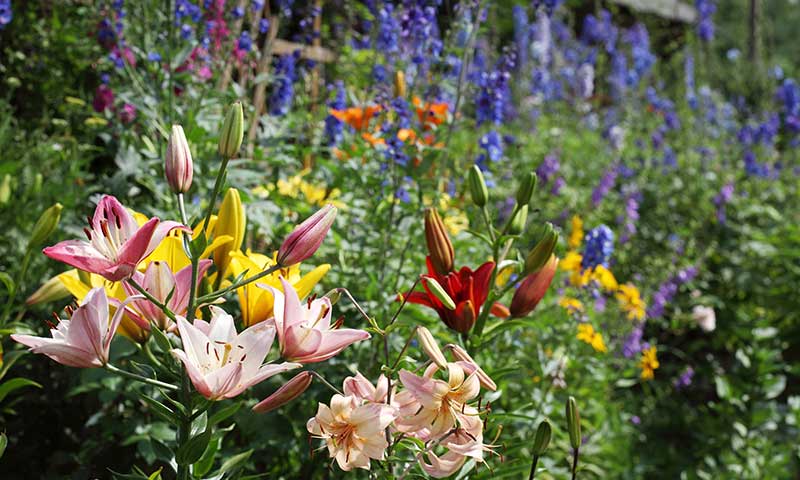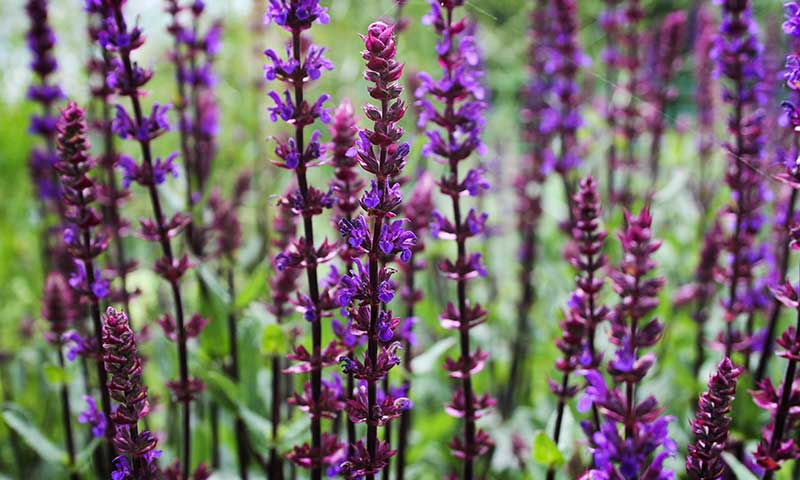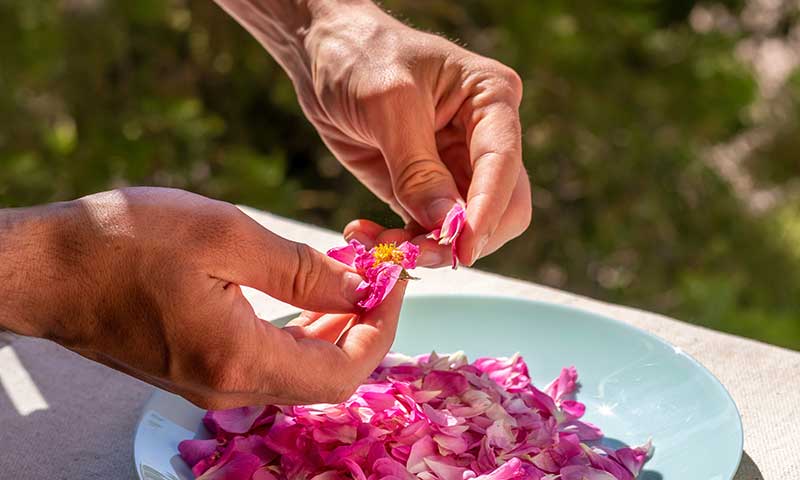How to Grow and Fertilize Perennials
Woven through flower beds and foundation plantings, perennials are the backbone of gorgeous gardens. Annual flowers and their static blooms have their place, but flowering perennials deliver ever-changing color, growth and blooms year after year. The secret to these beauties? Keeping them well fed. With good soil and revitalizing fertilizers, you can enjoy all perennials have to give.
- Understanding Flowering Perennials
- Feeding Perennials for Blooms and Beauty
- Getting Bonus Flowers from Perennials

Garden-grown perennials compete for nutrients in soil and fertilizers.
Understanding Flowering Perennials
When it comes to gracing your gardens, perennials are in it for the long haul. Plant them once, and they come back again and again, so you don't have to replant every year. Annuals live a single season, give their all and die. Perennials naturally take at least three years — sometimes much longer — to complete their life cycle, growing larger and more fabulous as they mature.
Perennials generally flower for shorter time periods than annual flowers. Each type has its own timing, but the variety in bloom times, textures, colors and forms keep yards and gardens looking fresh and vibrant all season long. From perennial wildflower meadows to drought-tolerant gardens, proper feeding helps perennials keep their beauty and vigor and prepare for coming years.
Compared to natural settings, perennial beds get crowded and competitive. All those lovely flowers contend for the same soil nutrients. Even plants that naturally thrive in poor soil, including perennial herbs, benefit from good soil and nutrition in garden settings.
With Pennington Rejuvenate Natural & Organic Potting Garden Soil Mix, you can revitalize your garden soil with essential plant nutrients, sustainably sourced peat moss, earthworm castings and added bio-stimulants that improve native soil health and soil structure and help your perennials use the nutrients you feed them.

Good soil, food and pruning keep perennial blooms coming.
Feeding Perennials for Blooms and Beauty
High-nitrogen fertilizers, including common houseplant foods, stimulate leafy, green growth. That's fine for lettuce, kale and other leafy veggies, but not for flowers. For prolific blooms, perennials need fertilizers that boost flowers, not just leaves and stems.
Encourage luxuriant blossoms and extended perennial bloom times with a solid nutritional foundation. Feed perennials at planting time and each spring thereafter with a balanced fertilizer — one that provides equal percentages of the three primary plant nutrients: nitrogen, phosphorus and potassium. That means the three main numbers on your fertilizer label, called the N-P-K ratio, will all be the same.
Pennington Rejuvenate Plant Food All Purpose 4-4-4 provides a blend of organic and natural ingredients that revitalize soil and provide a foundation to help perennials thrive. Designed to work with Mother Nature, not against her, this balanced fertilizer combines essential plant nutrients along with earthworm castings, humic acids and beneficial microorganisms that help strengthen plants against stress and drought.
Throughout the growing season, lavish flowers, prolonged blooms and vigorous roots need added fuel. A fertilizer with a higher percentage of phosphorus relative to other nutrients — one where the middle number on the package is the highest — helps take perennials from subpar to superb. Added phosphorus supports bigger, more colorful flowers and strong roots, and helps perennials use other nutrients more efficiently.
With Pennington Rejuvenate Plant Food Rose & Flower 4-6-3, your flowering perennials and garden roses get the nutrient boost they need for vigorous growth and dependable blooms. Applied every one to two months during the growing season, this natural and organic blend of nutrients and rejuvenating, Earth-friendly ingredients helps keep perennials fueled for flowers and at their peak.

Deadheaded perennial blooms make soft petal-based fabric dyes.
Getting Bonus Flowers from Perennials
Most perennials have more to give than first appears, but they need a hand to pull it off. Keep them flowering longer and encourage new blooms by "deadheading" plants after flowering. Deadheading is simply removing dead or spent flower heads when blooms fade.
When flowers pollinated by birds, bees and butterflies begin to set seed, flower production naturally slows down or stops. Deadheading removes spent flower heads, so seeds don't form — and perennials keep blooming instead.
Deadhead perennials by hand or with pruners. Simply pinch or cut the stems back to a new flower, bud or leaf. Remove the entire head, not just the wilting petals. Cut flowers with single, bare stems back to their base. (If you want your garden to help feed birds in winter, leave some dead heads in place — seeds in perennial coneflower heads are fall and winter favorites.)
Help perennials give even more with a practice known as "shearing." It's a common hack commercial growers and savvy gardeners use. As simple as the name suggests, shearing is just cutting back 25% to 50% of the plant's height with a pair of garden or hedging shears.
Shear late-blooming perennials back early in the season, long before they bloom, to encourage fuller plants and more profuse blooms later on. Shear early-season bloomers right after they flower for fresh, full foliage and a second, smaller flush of flowers that often follows.
With a little garden love, good soil and bloom-enhancing food, you can keep perennials happy, gorgeous and prepped for repeats next year. At Pennington, we understand the feeling that comes from having your x slice of earth and connecting with plants indoors and out. Have a question or a comment? We'd love to hear it and stay in touch. Let us help you nurture your roots.
Always read product labels thoroughly and follow instructions.




